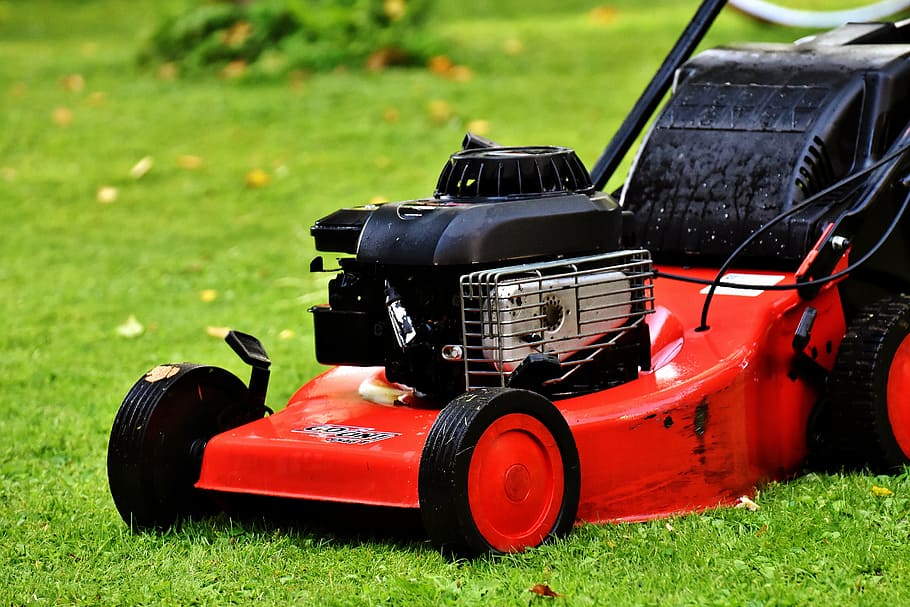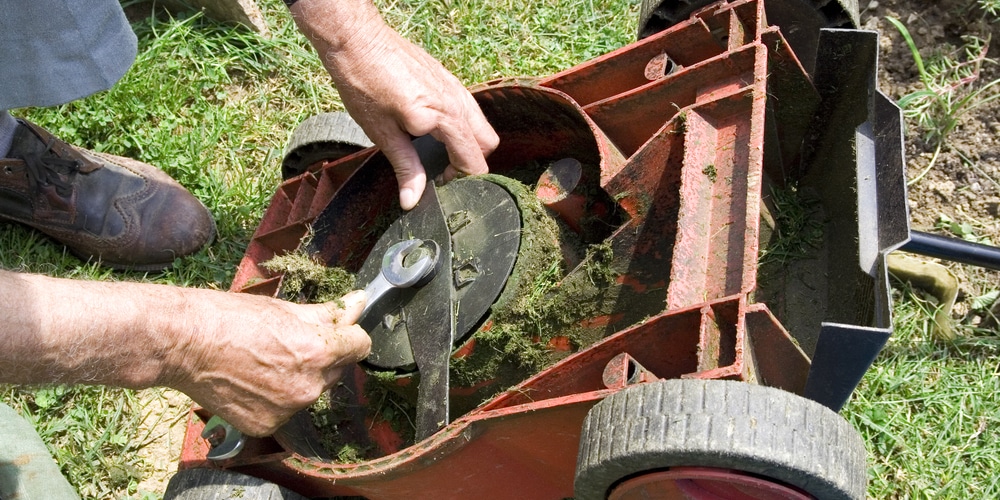There is no way around this: you will have to mow your lawn frequently (at least once per week) if you want to maintain its aesthetic appearance. And sometimes, clumps might add up together, even only a couple of days after mowing your lawn.
While this might sound like a nuisance, the truth is that in the long run, it will take you time and effort to deal with them. But have you ever wondered: “why is my lawn mower leaving clumps of grass”?
If you have, you have landed in the right place. Here, you can learn what makes grass clipping stuck together (and what you can do to avoid it). If this interests you, keep reading!
Why is My Lawn Mower Leaving Clumps of Grass

After you mow your grass, you might see clumps scattered around. Of course, this won’t do much damage in small amounts. However, it will alter the aesthetics of your lawn.
Plus, the clumps in your yard might not allow sunlight and nutrients to get into the soil, which may damage your turf in the future. Indeed, grass clumps might harm the health of your lawn and even leave dead patches.
Don’t forget that grass tends to clump together when it is too wet. And this is often the cause of rotting, which is the symptom of other issues.
Luckily, you can avoid grass clumps! There are many reasons why they form, so learning about them can help you take adequate measures to prevent them from appearing on your lawn. To make things easier for you, we collected them here!
Wet Lawn
One of the most common reasons for grass clumps is mowing a wet lawn. After all, moisture in the soil softens the ground and allows the turf to stick to it.
If your mower is heavy, it may sink into the grass and absorb some moisture as it cuts it, which will result in clumps of grass that will eventually clog your machine.
We recommend you not mow your lawn when wet: you’ll avoid many issues! Indeed, cutting your grass when wet comes with the hazard of slipping, which you’ll be better off avoiding.
Unfrequent Mowing
Stick to a regular mowing schedule to prevent the formation of grass clumps. Of course, that doesn’t mean you should leave it too short (which comes with other problems).
But, it is always a good idea to cut your grass often. Indeed, giving it a deep cut once in a while might leave you with plenty of clumps. Never let your grass grow too much between mowing to prevent clippings.
If your lawn is too long, consider cutting it a bit and waiting a few days to reach an even result. If the grass is overgrown, consider starting your mowing schedule with a weed wacker.
Collect the initial clippings and proceed with your mower after reaching a more manageable size. Also, remember not to remove more than one-third of the length of your grass blades.
Unsharpen Blades
You must sharpen your machine’s blades to get the most out of your mowing practice. Doing so will result in a clean cut which will, in the long run, give you a healthier lawn.
Hence, it will prevent the formation of unappealing clumps of grass in your yard. Don’t forget that you might have to upgrade your machine if the clumping problem stays even if you are cutting your grass when it’s dry with a regular mowing schedule.
Also, some discharge mowers might have shallow decks, which can cause the grass to build up on your lawn. Remember to perform maintenance on your mower.
For instance, you should regularly scrape the bottom of the deck with a knife. The idea is to remove all the mud and grass clippings and prevent any blocking.
Related Article: Can You Mow in the Rain?
